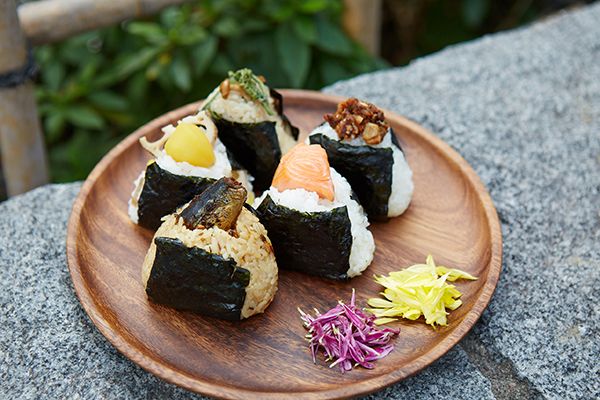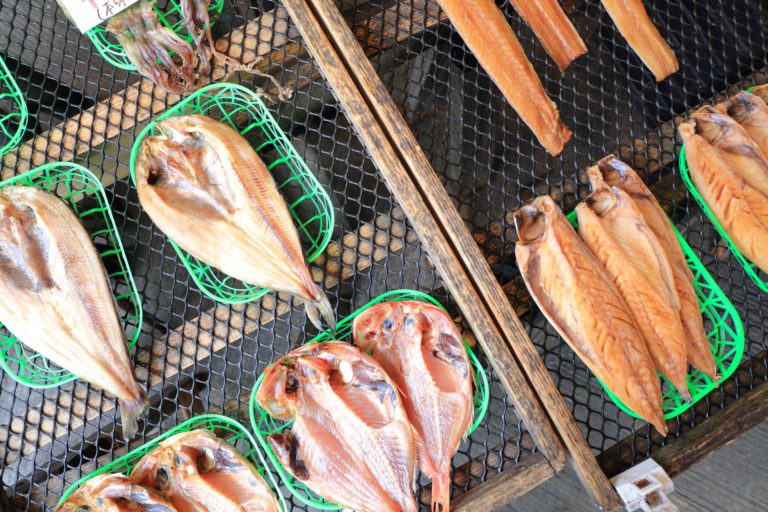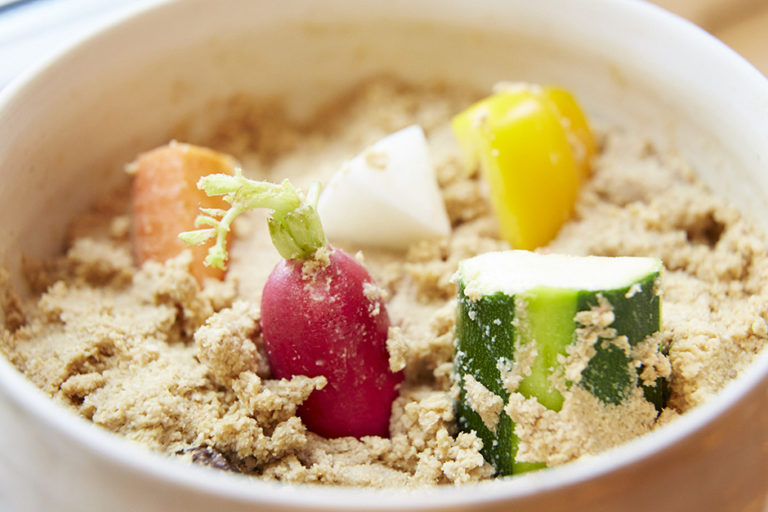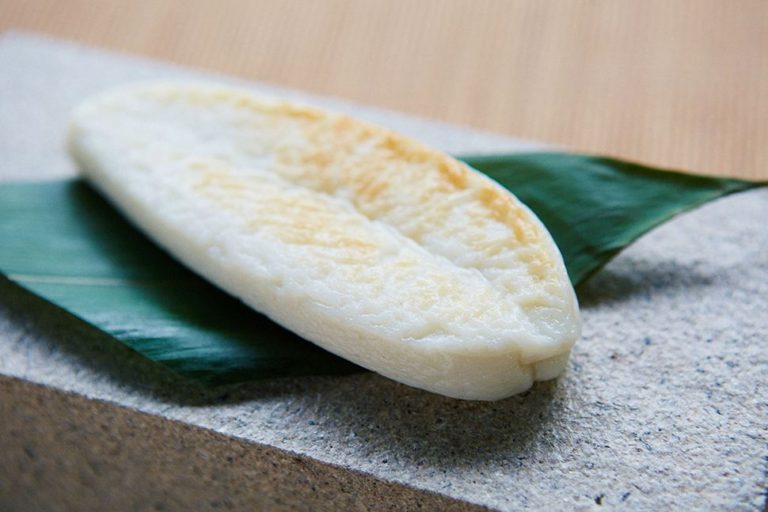Stormy Winds of Ise Lock in the Flavor of the Unique Tomato
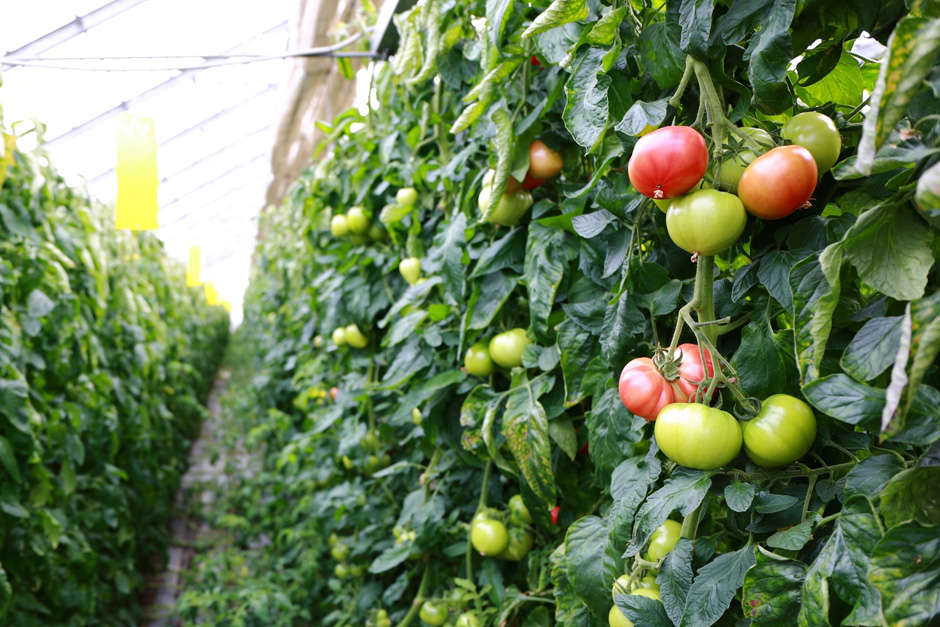
Tomatoes—a vegetable that favors moderate climates—are one of Ise’s major products. Hearing of a tomato producer who utilizes Ise’s natural environment and has established his own brand of tomatoes that are very popular with consumers and chefs in Tokyo, we visited his field.
Using natural farming methods to develop the strong vegetable flavor of tomatoes
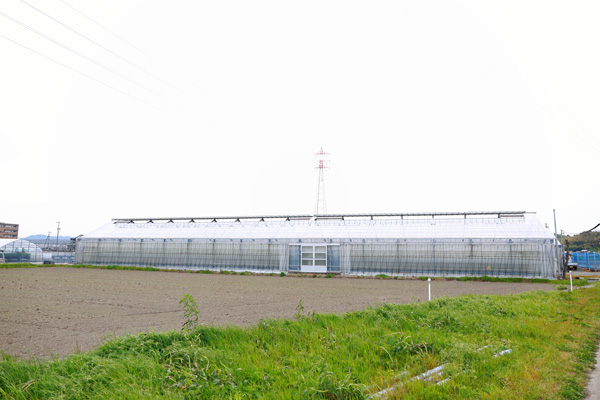
Jungo Taniguchi is a farmer in Ise’s Obata District. He has been growing tomatoes in greenhouses in the field that has been in his family for generations, and ships about 200,000 tomatoes a year.
Taniguchi’s tomato is a variety called House Momotaro. It is a relatively popular variety among all the tomatoes in the market, but Taniguchi brings out the maximum good taste of the tomato by sticking to natural farming methods religiously.
Tomatoes in greenhouses are usually grown using hydroponic cultivation methods, with a solution of fertilizers dissolved in water. But Taniguchi grows his tomatoes practicing soil culture, using thoroughly ploughed soil to fill the tomatoes with nutrition.
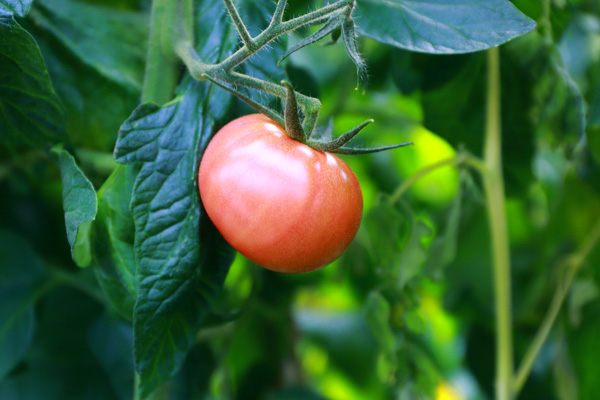
“Hydroculture takes less effort. It also makes the tomatoes uniform, and the yield is high. You can also grow very sweet tomatoes with a high sugar content that way, but they will not have enough aroma. They will taste like a dessert. I wanted to make more earthy tomatoes, with a distinctive vegetable flavor. That is why I focused on soil culture.”
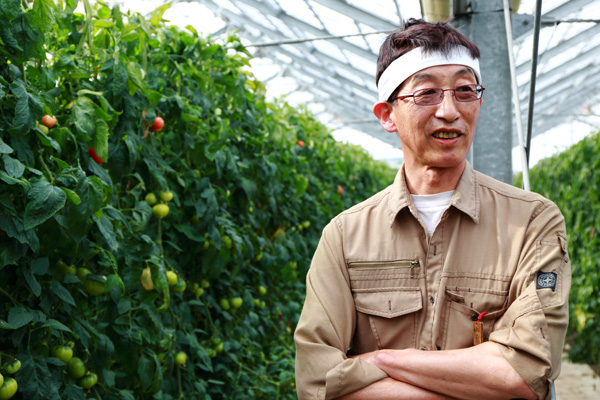
To preserve the original aroma of the tomatoes, Taniguchi depends on the power of nature as much as possible and uses the bare minimal amount of insecticides and chemical fertilizers, because the smell of the chemicals always transfers to the tomatoes. The important thing when preparing soil is to use wheat germ and husks. Taniguchi lines the entire field with wheat germ and husks, soaks them in water to seal the surface, and brings in sunlight to disinfect the soil culture and reduce the number of pathogens. The process takes much longer and requires a lot more effort than using insecticides.
Strong winds of Ise brings out the tomato’s character
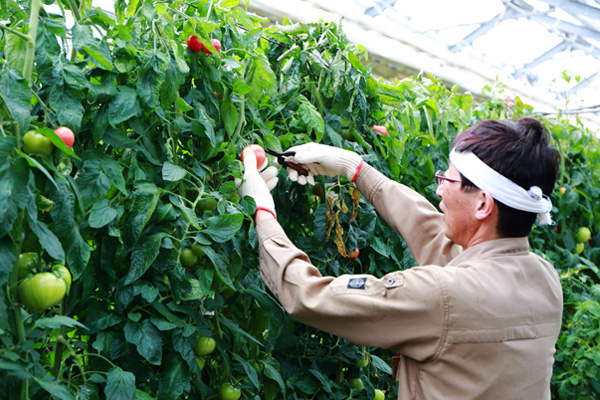
Taniguchi’s tomatoes are grown with so much effort and attention. It is the wind of Ise that makes them even tastier.
Tomato growers plant the young plants in August and September. Tomatoes then begin to get red in October and can be harvested until mid-June. From the summer to autumn, when tomatoes begin to grow rapidly, many typhoons pass through Ise. In the winter, the field gets very strong winds from the northwest. These winds are usually headaches for farmers, but Taniguchi opens the greenhouse windows and exposes his tomatoes to the wind to achieve the texture and flavor that no other tomatoes have.
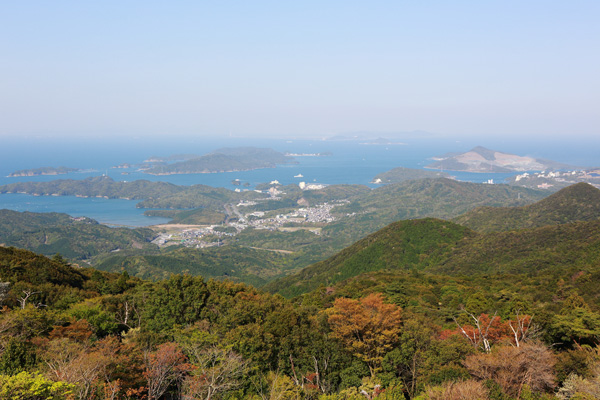
“We get gusts of wind of about 20 meters per second around here. I thought it was trouble at first, but when the tomatoes were exposed to the wind, their skin achieved just the right amount of dryness. You get firm, tight and juicy tomatoes. I thought this was one unique tomato and shipped it, and just as I had expected, it went down very well with the customers.”
The dry skin of the tomatoes made crisp sounds when eaten, so the tomatoes that grew in the corner of the greenhouse exposed to the wind were named “Paripari Tomato” (paripari is the phonetic Japanese sound that expresses crispiness) and launched as a brand. The skin had a pleasant texture, and interestingly, the tomatoes tasted better as they were chewed more. Backed by these factors the tomatoes became an instant hit, starting from farmer’s markets in Tokyo. Paripari Tomato became synonymous with Taniguchi’s name.
“Paripari Tomato” taught Taniguchi the joy of farming
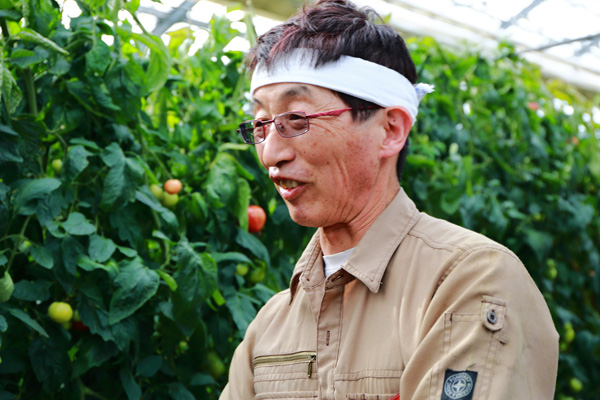
Taniguchi started selling Paripari Tomato about five years ago. For 30 years until that time, he had been shipping standard, uniform-sized tomatoes to the market via an agricultural co-op. Paripari Tomato changed the way Taniguchi viewed farming.
“In retrospect, I was just a worker before, so to speak. I just did what I was told to do and shipped the tomatoes as I was told. But after I started selling Paripari Tomato directly to customers, I received responses directly from customers. I learned that many customers would happily pay premium if my tomatoes were tasty. It motivated me to grow even tastier tomatoes, and I wanted more people to know about my tomatoes.”
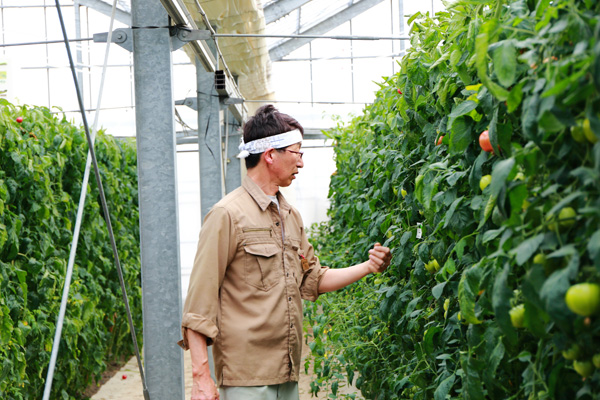
Not limiting his target to general consumers, Taniguchi started proactively introducing Paripari Tomato to nearby restaurants and Japanese cuisine restaurants and expanded his sales channel. Eventually, many chefs recognized Paripari Tomato as a prized ingredient. At the Ise Shima Summit 2016, Taniguchi’s tomato was used in the appetizer of the course menu served to the leaders of the member countries at Shima Kanko Hotel, the venue of the summit. His tomatoes were arranged by top chefs and caused the world VIPs to let out a sigh of delight. The tomatoes are still a regular item of the hotel’s menu.
“When I first heard the news, it was such a surprise. It is such an honor. I was so happy to have kept up farming. When I secretly went to sample it, my tomato tasted better than I imagined. The chef that prepared the tomatoes has such an amazing ability (laughing). I have never been so happy farming.”
Taniguchi perfected this tomato, pouring a lot of attention and care, and utilizing not just the best part of Ise’s natural environment but also turning its disadvantage into an advantage. The potential only continues to expand.
Paripari Tomato from Ise
Source:Jungo Taniguchi, tomato grower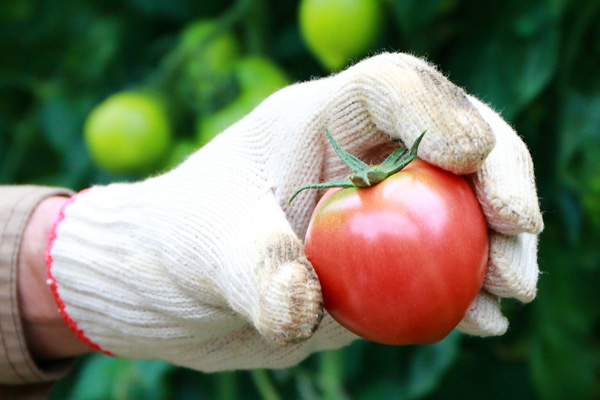
Peak Season
January to May (before temperatures begin to rise)
Tips
Choose ones with juicy and taut caps and cross-sections.
The whole tomato should be red, round and evenly colored.
There should be a little fluff on the skin, and the skin should be firm. The tomato should also feel heavy.
How to enjoy them
Served fresh like caprese or
heated for tomato spaghetti.

